A bit of Maui weather
Hawai’i is called the “rainbow state” and it’s easy to see why. I lost count of rainbows sometime after seven today. I think nearly every place on earth claims that “if you don’t like the weather, wait a day and it will change.” In Hawai’i, change “a day” to “five minutes.” The rain comes and goes quickly and repeatedly throughout the day. Annual rainfall on Maui ranges from 10 inches to over 400 inches–and that’s within a 15-minute drive!
The Hawaiian Islands were formed by a north-south range of volcanic mountains. Weather in Hawai’i is influenced by the eastern trade winds, so storms approach from the east and move westward. As a result, more rain falls on the eastern side of the islands as the clouds move westward over the mountains, making the western side of the islands much drier. It looked odd to see trees leaning to the west as a result of constant winds. In the Midwest, the wind blows them to the east.
A few Maui facts
(1) The Apollo astronauts trained on Maui’s Haleakala Volcano because it is high, cold, and resembles the surface of the moon. (2) Maui is indeed the home of “Maui wowee.” (3) Until 1926, there was only ship access to Maui. Motor vehicles were rare on the island before the 1940s. (4) Hana is a very important shipping port for pineapple. The Maui Gold pineapple is trademarked and very sweet. I don’t like pineapple very much, but Maui Gold is unbelievably good! (5) The yellow bamboo that grows in the Hawai’ian islands is so strong, the Chinese use it for scaffolding. (6) Few people live on Maui, and most of the island has no electricity or water system. The “shopping area” in one part of Maui is a single fruit stand. Conditions are even more primitive deeper in the rainforest. There are not enough children on the island to support a school, so children are home-schooled or they board on another island.
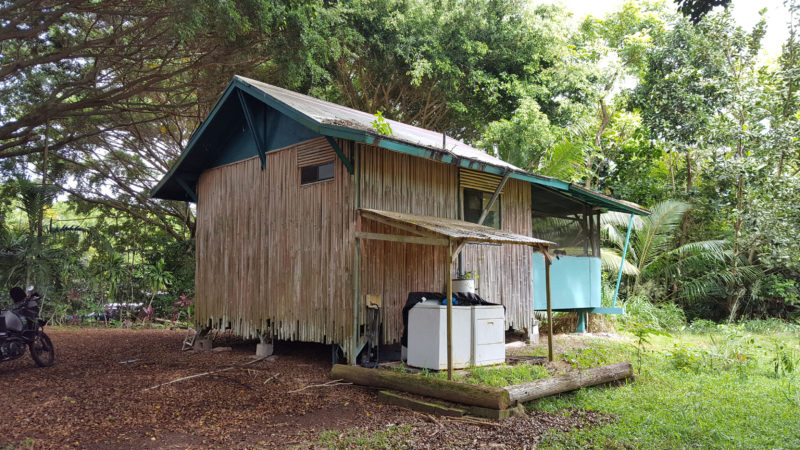
A bamboo house in the rainforest.
A little Maui history
[This is a long story, so I’m going to greatly condense it.] The chief of Maui was good buddies with a sugar cane plantation owner (I forgot his name). As a result, that plantation owner got a lot of political favors from the king and had the biggest sugar cane plantation on the island. Alexander and Baldwin (yes, of Baldwin pianos) had the second and third largest sugar cane plantations, but no political favors. Alexander and Baldwin looked at all the rain in the mountains and at their dry sugar fields in the lowlands (see the first paragraph, above) and decided they could use gravity to bring water down both sides of the mountains to supply water for people and for sugar cane everywhere on the island.
In 1876, Alexander and Baldwin proposed a plan to the king: they would build a 17-mile-long aqueduct to move the water and they would complete it in 18 months. If they were successful, all other plantation owners would pay them for water rights. The king and his buddy agreed to the plan because they didn’t think this could be done in 18 months. When Alexander and Baldwin failed to meet the deadline, the king would confiscate whatever was completed, finish it, and collect the water rights himself. Surprise! Alexander and Baldwin completed the aqueduct with about a week to spare, collected the water rights money, and then became the richest sugar cane plantation owners on Maui. Today, no sugar cane is grown in the Hawaiian Islands. Sugar beets replaced cane, and the last sugar cane was harvested two years ago.
Why is this story important? Because the Road to Hana–a popular tourist attraction–was the original path Alexander and Baldwin cut through the jungle and rainforest to build their aqueducts. The aqueducts are visible all along the Road to Hana and still carry water down from the mountains.
A lot of Maui pictures
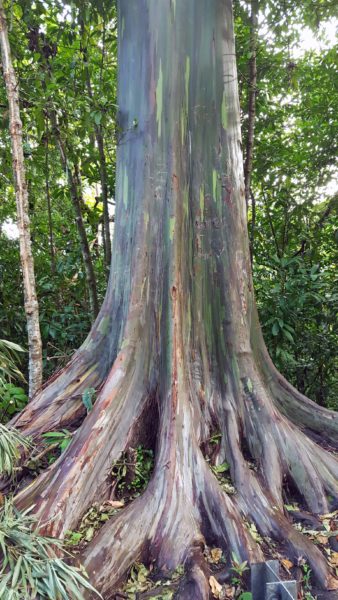
The rainbow eucalyptus shows its colors especially well when it’s wet (every day).
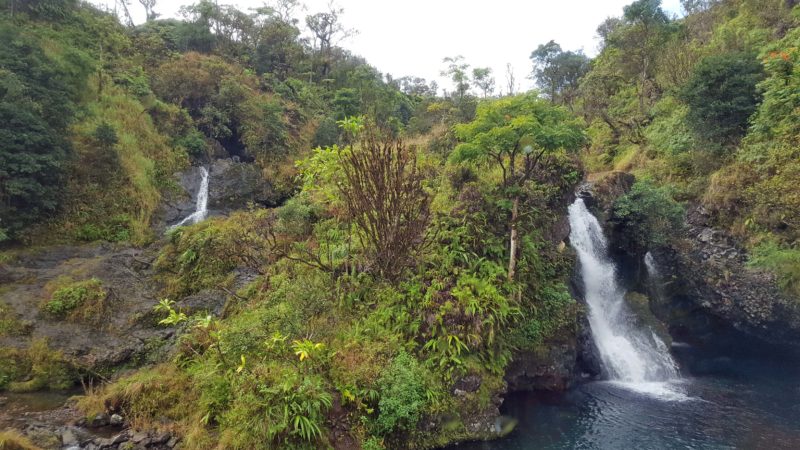
Twin waterfalls. There are so many waterfalls in Hawai’i, they’re not locally remarkable.

A black sand beach, formed by eroded black volcanic rock. Look! It’s warm enough for people to swim in the ocean in January!
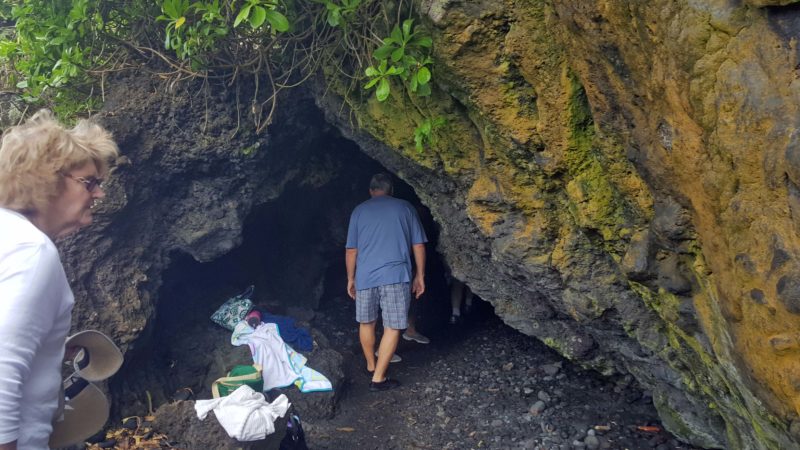
Hawai’i was formed by shield volcanoes. Shield volcanoes form lava tubes. Here’s the entrance to a lava tube at the black sand beach.
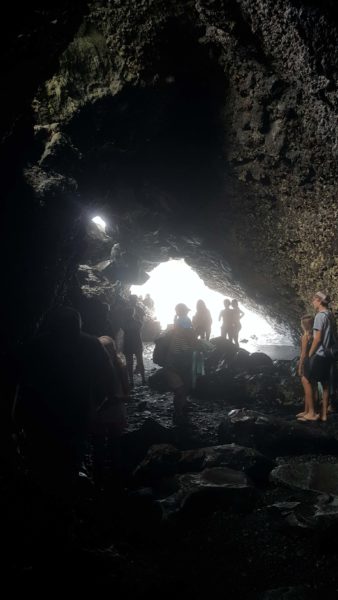
Inside the lava tube.
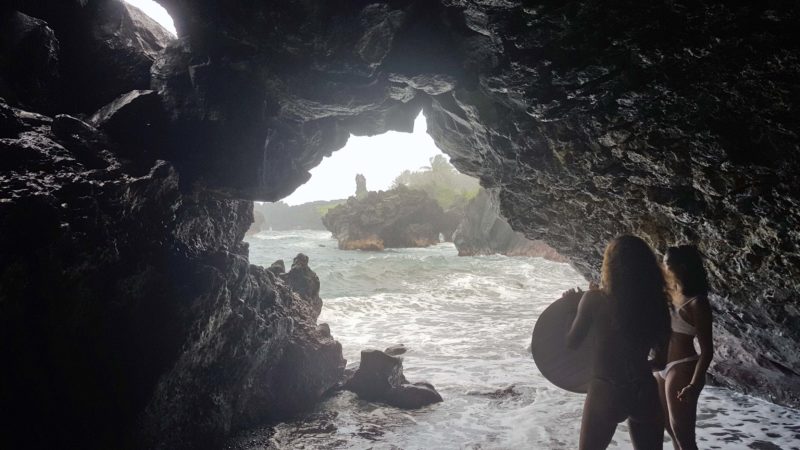
The other end of the lava tube at the black sand beach.

Because ship’s masts often broke in storms, Captain James Cook introduced the Cook (Norfolk) pine to the coasts of the islands, where they would be accessible to ships’ crews. Cook pines grow very straight and tall, so they could be used as replacement masts. Unfortunately, they tend to break near the joints where the branches grow, so they are only a temporary fix. These Cook pines are all leaning toward the west.
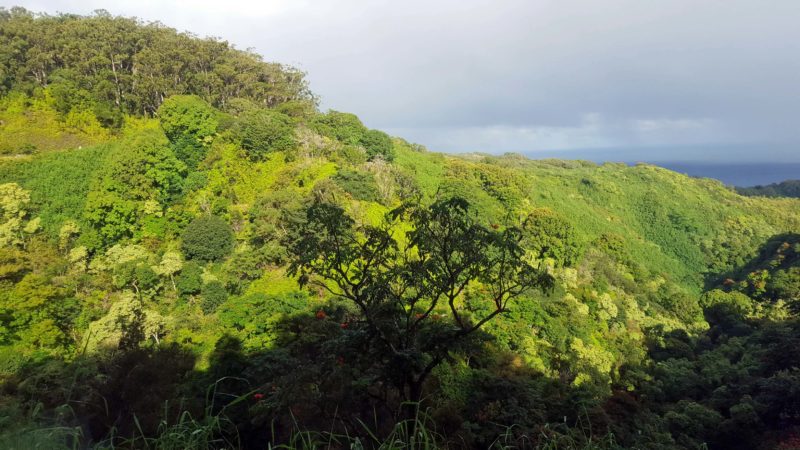
Unbelievably thick vegetation everywhere!
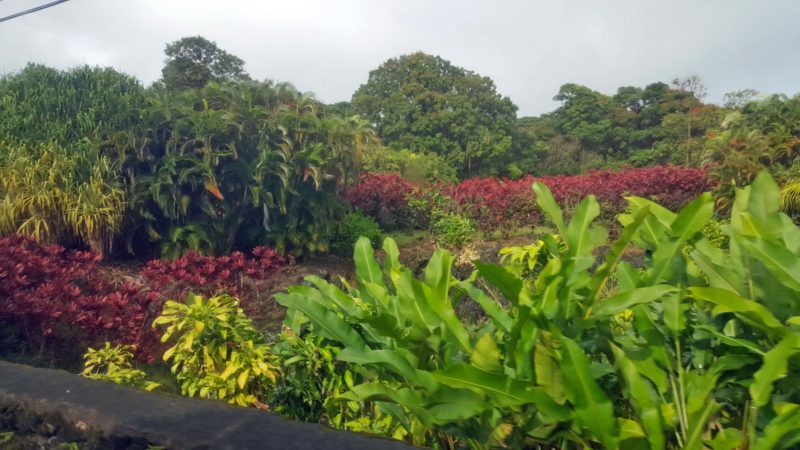
Beautiful rainforest plants.
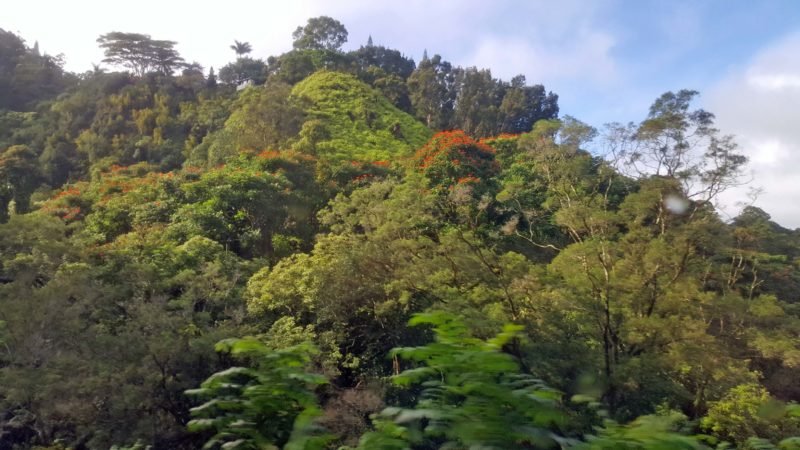
The red flowers on the trees are African tulips. In some places, there are so many, it looks like red leaves in the fall in the Midwest.
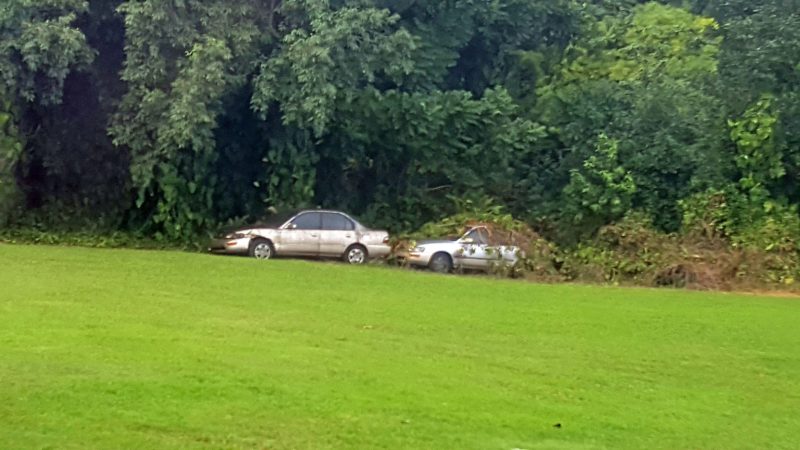
Vegetation that grows wild enough to cover cars. I verified three cars in varying stages of overgrowth. (You can barely see the front wheel cover of the third car.) There might be a fourth car on the far right.
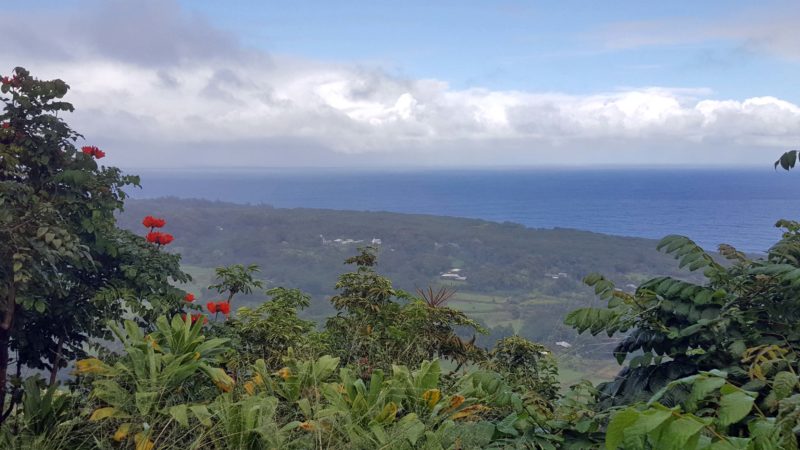
A beautiful overlook and the next shower (and resulting rainbow) moving toward us–from the east, of course.

The waves thunder when they come into this cove.
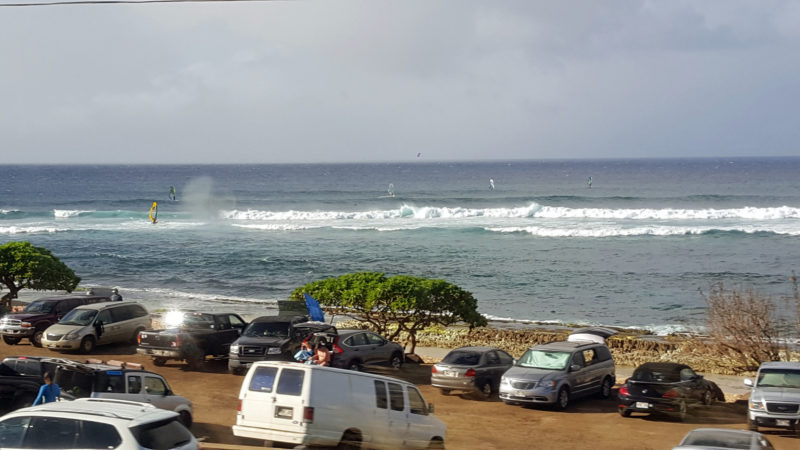
Wind surfers on the north shore of Maui.